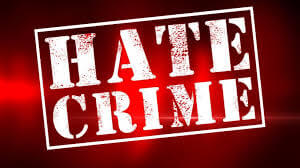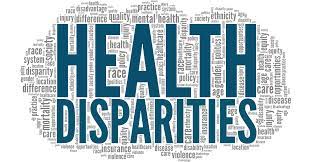
English Project On Racial Discrimination For Class 12
Introduction
Racial discrimination stands as a persistent and deeply rooted issue that has cast its shadow throughout the annals of history, casting individuals and communities into the darkness of bias and prejudice based on their racial or ethnic heritage. This introduction seeks to illuminate the character of racial discrimination, underscoring its unwavering relevance in the contemporary tapestry of society.
The Tapestry of Racial Discrimination:
Racial discrimination, often referred to as racism, weaves a complex fabric comprising prejudiced attitudes, discriminatory actions, and entrenched systemic practices. This mosaic unjustly disadvantages individuals or groups due to their racial or ethnic identity. It manifests in myriad forms, spanning from overt acts of intolerance to subtle microaggressions, from unequal treatment in educational and professional settings to insidious racial profiling, and from disparities in resource access to barriers limiting opportunities.
The Imperative of Addressing This Issue:
The imperative of confronting racial discrimination transcends moral boundaries; it is an urgent societal necessity in the 21st century. Several compelling factors underscore its enduring importance:
- Social Justice and Equality: Racial discrimination serves as a stumbling block to the pursuit of justice and equality. It thwarts social advancement and undermines the very bedrock principles that democratic societies strive to champion.
- Human Dignity: Every individual, irrespective of their racial or ethnic background, warrants dignity and respect. The battle against racial discrimination is fundamental to preserving the intrinsic value of all human beings.
- Economic and Social Ramifications: The consequences of racial discrimination ripple far and wide, impacting economies and societies. It restricts access to quality education, gainful employment, essential healthcare, and secure housing, perpetuating cycles of impoverishment and disenfranchisement among marginalized populations.
- Social Harmony: A just and inclusive society fosters social cohesion and unity. By confronting racial discrimination, we forge an environment in which diverse individuals and communities can coexist and flourish, enriching our collective tapestry.
- Global Perspective: Racial discrimination transcends geographical boundaries. It is a worldwide challenge that necessitates international collaboration and awareness, striving together to shape a fairer and more equitable global landscape.
Historical Context
The tendrils of racial discrimination delve deep into the annals of history, leaving an indelible mark on societies and nations for centuries. This historical backdrop is shaped by pivotal events and practices that include:
- Slavery: Among the most abhorrent manifestations of racial discrimination, slavery casts a dark shadow over history. It endured for centuries, particularly in the United States and the colonial empires of Europe. Slavery entailed the cruel imposition of forced labor and the subjugation of individuals of African descent, degrading them to property rather than recognizing their inherent humanity.
- Colonialism: European colonial powers embarked on the colonization of vast regions, imposing their dominion and exploiting indigenous populations. Colonialism often entailed systematic discrimination and the ruthless suppression of native cultures and rights, further perpetuating racial injustice.
- Segregation: After the abolition of slavery, many societies implemented segregation laws that mandated racial separation. The United States, in particular, witnessed the enactment of Jim Crow laws that entrenched discrimination by segregating public facilities, schools, and even public transportation based on race.
- Civil Rights Movements: The 20th century bore witness to the emergence of civil rights movements, exemplified by the U.S. Civil Rights Movement led by luminaries like Martin Luther King Jr. These movements were steadfast in their mission to dismantle legal and institutional racism, champion equal rights, and bring an end to discriminatory practices that had long plagued societies.
- Apartheid: South Africa stood as a crucible for institutionalized racial segregation and discrimination, enduring for decades under the brutal system of apartheid. This regime engendered profound social and economic disparities, systematically disenfranchising non-white populations.
Forms of Racial Discrimination
- Institutional Racism: Institutional racism is a systemic pattern of discrimination ingrained within societal institutions, including government, education, and criminal justice systems. It often results in unequal access to opportunities, resources, and justice based solely on one’s race or ethnicity. Examples encompass racially biased policing, disparities in educational funding, and discriminatory hiring practices.
- Microaggressions: Microaggressions are subtle, everyday acts or comments that convey derogatory or prejudiced attitudes toward individuals of a specific race or ethnicity. These actions can be verbal, non-verbal, or environmental and encompass dismissive remarks, perpetuation of stereotypes, or exclusionary behavior.
- Racial Profiling: Racial profiling unfolds when individuals are singled out or treated disparately by law enforcement or other authorities based on their racial or ethnic identity rather than concrete evidence of criminal behavior. This practice often leads to unjust arrests, unwarranted stops, or harassment of minority individuals.
- Employment Discrimination: Employment discrimination takes shape through the unjust treatment of employees or job applicants rooted in their race, ethnicity, or national origin. It manifests as disparities in pay, biased hiring practices, lack of career advancement opportunities, or workplace harassment.
- Housing Discrimination: Housing discrimination transpires when individuals or families are denied housing opportunities or subjected to unfair treatment in housing-related transactions, such as renting or purchasing a home, due to their racial background. This practice perpetuates segregated neighborhoods and unequal access to quality housing.
Impact of Racial Discrimination
Racial discrimination exacts a profound and enduring toll, casting a long shadow over individuals and communities, perpetuating cycles of inequality and sowing seeds of social division. Its impact is far-reaching, encompassing:
- Psychological and Emotional Trauma: Discrimination inflicts deep psychological and emotional wounds. Targets of discrimination often grapple with psychological distress, anxiety, depression, and diminished self-esteem. The persistent stress of facing prejudice and bias can leave enduring scars on mental well-being.
- Economic Disparities: Discrimination operates as a gatekeeper, curtailing access to quality education, gainful employment, and secure housing. This results in pronounced economic disparities, higher poverty rates, and limited opportunities for affected individuals and communities.
- Health Disparities: The adverse effects of racial discrimination reverberate through health disparities. These disparities manifest as higher rates of chronic illnesses, reduced life expectancy, and restricted access to quality healthcare among marginalized racial groups.
- Educational Inequities: Discrimination in educational settings begets unequal educational opportunities and outcomes. Minority students often encounter disparities such as lower school funding, limited access to advanced placement courses, and heightened rates of disciplinary actions.
- Community Division: Racial discrimination fosters social division and mistrust among communities. It impedes the cultivation of social cohesion and obstructs endeavors aimed at building diverse, inclusive societies.
Statistics and real-life instances underscore the harrowing impact of racial discrimination:
- Research by the American Psychological Association has uncovered that experiences of discrimination are associated with an increased risk of mental health disorders among racial and ethnic minority populations.
- The glaring racial wealth gap in the United States lays bare the disparities, with the median wealth of Black and Hispanic households significantly lagging behind that of White households.
- Racial profiling has left a trail of wrongful arrests and tragic fatalities, epitomized by high-profile cases such as the killings of Trayvon Martin and George Floyd.
- Discrimination within lending practices has contributed to disparities in homeownership rates, with minority communities grappling with higher rates of foreclosure and housing instability.
Legal Framework
Legal Measures and Protections Against Racial Discrimination:
The legal framework stands as a critical bulwark against racial discrimination, offering measures and protections that are instrumental in the ongoing battle for equality. In the United States, pivotal legislation includes:
- Civil Rights Act of 1964: The Civil Rights Act of 1964 stands as a federal statute that erects barriers against discrimination grounded in race, color, religion, sex, or national origin. It casts a wide net, addressing discrimination in various spheres, encompassing employment, education, and public accommodations.
- Fair Housing Act: Enacted in 1968, the Fair Housing Act serves as a sentinel against housing discrimination predicated on race, color, religion, sex, or national origin. This legislation seeks to ensure equitable access to housing opportunities.
- Voting Rights Act: The Voting Rights Act is an indispensable bulwark safeguarding the right to vote. It combats discriminatory voting practices that disproportionately impact minority communities, ensuring the preservation of this fundamental democratic right.
Role of Human Rights Organizations and International Conventions:
Human rights organizations are instrumental in the fight for justice and equality, championing the rights of marginalized communities and holding institutions accountable for racial discrimination. Notable organizations include the American Civil Liberties Union (ACLU) and the NAACP.
At the international level, conventions such as the International Convention on the Elimination of All Forms of Racial Discrimination, adopted by the United Nations, serve as beacons of hope. These conventions facilitate global endeavors to combat racial discrimination, offering a blueprint for nations to implement measures that eradicate discrimination and safeguard human rights.
Contemporary Issues
The tapestry of contemporary society, racial discrimination persists as an urgent and multifaceted issue, assuming various forms and sparking critical conversations. Analysis of current events and issues reveals a landscape marked by:
- Police Brutality: High-profile cases of police brutality against racial minorities have ignited nationwide protests and fervent calls for comprehensive police reform. Incidents like the tragic killing of George Floyd in 2020 have thrust the imperative of addressing systemic racism within law enforcement into the spotlight.

- Hate Crimes: Hate crimes targeting individuals based on their race or ethnicity endure on a global scale. These offenses span a spectrum from verbal harassment and menacing threats to physical violence, often fueled by extremist ideologies.

- Healthcare Disparities: The crucible of the COVID-19 pandemic has cast a stark light on racial disparities in healthcare access and outcomes. Minority communities have borne a disproportionate burden, witnessing higher infection rates and mortality rates. These disparities are emblematic of long-standing inequities in healthcare access and quality.

- Educational Inequities: Racial disparities in education endure, with minority students often grappling with unequal access to resources, school segregation, and lower educational attainment.

- Voting Rights: Recent efforts to curtail voting access have had a disproportionate impact on minority communities. Laws that restrict voting opportunities and target minority voters have raised profound concerns about voter suppression.

Prominent Figures
In the annals of history, certain figures emerge as beacons of hope and catalysts for change in the relentless battle against racial discrimination. Notable among them are:
- Martin Luther King Jr.: An indomitable civil rights icon, Martin Luther King Jr. unfurled the banner of nonviolent resistance in the face of racial segregation and discrimination. His towering leadership and iconic speeches, including the immortal “I Have a Dream” oration, remain fountains of inspiration for justice movements worldwide.
- Nelson Mandela: Nelson Mandela’s unwavering struggle against apartheid in South Africa saw him endure 27 years of imprisonment. His release marked the beginning of a transformative journey to dismantle apartheid, ultimately culminating in his historic presidency as South Africa’s first black leader. His legacy epitomizes reconciliation and equality.
- Malala Yousafzai: While predominantly recognized for her fervent advocacy for girls’ education, Malala Yousafzai’s work encompasses broader issues of discrimination and inequality, particularly within marginalized communities. Her resolute voice shines a light on the enduring struggle for justice and equity.
These towering figures, through their courage, vision, and unwavering commitment, have etched indelible marks in the quest for a world free from the shackles of racial discrimination. Their legacies continue to embolden generations to champion the cause of justice and equality.
Literature and Art
In the realm of literature, music, art, and cinema, a profound exploration of racial discrimination unfolds, with these creative mediums serving as potent tools for catalyzing social change:
Literature:
- Works such as Harper Lee’s “To Kill a Mockingbird,” Toni Morrison’s “Beloved,” and Ta-Nehisi Coates’ “Between the World and Me” embark on profound journeys into the heart of racial discrimination. Through the written word, these authors unveil the intricate tapestry of lived experiences within marginalized communities, fostering empathy and understanding.
Music:
- Musicians of towering influence like Nina Simone, Bob Marley, and Kendrick Lamar have harnessed the power of melody and verse to address racial discrimination, social injustice, and inequality. Their songs reverberate as anthems of resistance, empowerment, and hope.
Art and Visual Arts:
- Artists such as Kara Walker, Jean-Michel Basquiat, and Frida Kahlo have wielded the brush and canvas to challenge racial stereotypes, cast a spotlight on pressing social issues, and celebrate the rich tapestry of cultural diversity. Their artistry unveils new perspectives and invites contemplation.
Cinema:
- On the cinematic stage, films such as “12 Years a Slave,” “Selma,” and “Do the Right Thing” boldly confront the specter of racial discrimination, illuminating historical and contemporary injustices. These motion pictures serve as both mirrors reflecting society’s complexities and windows offering insight and inspiration.
Through these expressive and evocative mediums, artists and creators contribute to a tapestry of narratives that not only shed light on the darkness of racial discrimination but also ignite conversations, foster empathy, and inspire action toward a more equitable future.
Solutions and Initiatives
- Education and Awareness Programs: Promoting education and awareness about the history and impact of racial discrimination is vital. Schools, community organizations, and workplaces should provide resources and programs that foster understanding and empathy.
- Advocacy for Policy Changes: Advocacy for policy changes at local, national, and international levels is crucial. This includes supporting reforms in criminal justice, voting rights, and education to address systemic racism.
- Promoting Diversity and Inclusion: Encouraging diversity and inclusion in workplaces, schools, and communities helps create environments where individuals from all racial backgrounds are valued and empowered. Diversity training, inclusive hiring practices, and multicultural events are steps toward this goal.
- Community Engagement: Engaging with marginalized communities and fostering dialogue helps identify their unique needs and concerns. Grassroots initiatives and community-led organizations play a vital role in empowering these communities.
- Legislation and Enforcement: Strengthening anti-discrimination laws and ensuring their enforcement is essential. This includes measures to address housing discrimination, employment bias, and hate crimes.
- Media Representation: Encouraging responsible and diverse media representation can combat racial stereotypes and prejudices. Media outlets should reflect the diversity of society in their reporting and portrayals.
Conclusion
In conclusion, “Understanding Racial Discrimination” has offered a comprehensive overview of the history, forms, impact, and ongoing challenges related to racial discrimination. We have explored the profound negative consequences of discrimination on individuals and communities and highlighted the importance of legal frameworks and prominent figures in the fight against racial inequality.
While progress has been made over the years, racial discrimination remains an enduring issue in contemporary society. However, there is hope in the collective efforts to combat discrimination through education, awareness, policy changes, and advocacy. It is crucial to acknowledge that the fight against racial discrimination is ongoing and requires the commitment of individuals, communities, institutions, and governments worldwide.
Eliminating racial discrimination is not only a moral imperative but also essential for building inclusive, just, and equitable societies. By working together to address this issue, we can create a future where every individual, regardless of their race or ethnicity, can live free from discrimination and enjoy the full benefits of a diverse and harmonious world.
Certificate
[Your School/Institution Logo][School Name][City, State/Location]CERTIFICATE OF ACHIEVEMENT
This is to certify that
Has successfully completed the requirements for the course
[Course Name]with dedication and excellence.
Date of Completion: [Date] [Authorized Signature][Name of the Authorized Signatory][Title/Position][School/Institution Name]
In order to download the PDF, You must follow on Youtube. Once done, Click on Submit
Follow On YoutubeSubscribed? Click on Confirm
Download English Project On Racial Discrimination For Class 12 PDF






